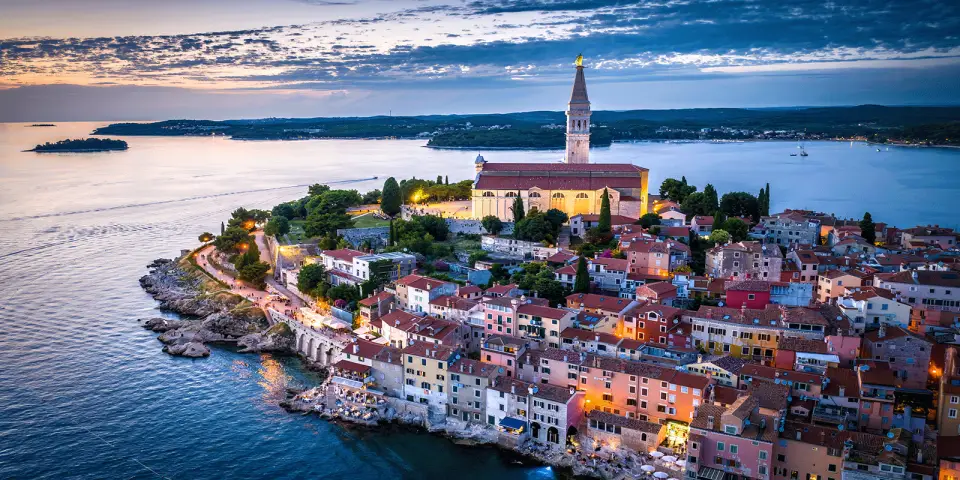A Deeper Dive into Rovinj

Rovinj, a jewel of the Istrian Peninsula, captivates visitors with its blend of history, culture, and natural beauty. This charming town, with its cobblestone streets winding towards the azure Adriatic, offers a quieter alternative to Croatia’s busier destinations.
Historical Heart of Rovinj
The heart of Rovinj's appeal lies in its rich history. The town's centerpiece, the Church of St. Euphemia, stands as a beacon for visitors. Climbing the church's tower rewards you with panoramic views of the terracotta rooftops contrasted against the azure sea. This historic church, dedicated to Rovinj's patron saint, showcases exquisite Baroque architecture and houses relics dating back centuries.
Artistic Alleys
Rovinj's narrow lanes are more than just pathways; they are galleries. Local artists display their works, from intricate paintings to handcrafted jewelry, turning these alleys into vibrant art exhibits. Exploring these streets allows visitors to discover the city's creative pulse, offering a chance to take a piece of Rovinj's artistic spirit home.
Culinary Delights
The culinary scene in Rovinj is deeply tied to its coastal roots. Seafood dominates the menus, with dishes like "buzara" (mussels in a wine and garlic broth) being a local favorite. The city's Italian influence is palpable in its pasta and risotto dishes, which perfectly marry the local seafood with Mediterranean flavors.
Hidden Beaches
Beyond the city, Rovinj's coastline is dotted with hidden beaches and coves. These secluded spots offer tranquility away from the more crowded beaches. Whether it’s the rocky coves around Lone Bay or the pebbled beaches near Zlatni Rt Forest Park, each provides a unique way to experience the crystal-clear waters of the Adriatic.
Eco-Adventures
For the environmentally inclined, Rovinj does not disappoint. Kayaking through the Rovinj archipelago, cycling through the Golden Cape Forest Park, or bird watching in the Palud Ornithological Reserve, the city offers numerous opportunities to engage with nature responsibly and sustainably.
Rovinj offers a unique blend of tranquility, beauty, and rich cultural tapestry, making it a must-visit for those exploring Croatia's coast. Its combination of historical landmarks, artistic avenues, culinary richness, and natural splendors make it an ideal destination for travelers seeking both relaxation and cultural immersion. Whether you're wandering through its historical lanes, dining by the sea, or exploring its natural landscapes, Rovinj promises a memorable experience that captures the heart of Croatia's hidden beauty.
Here are some intriguing historical facts about Rovinj that many might not know:
- Ancient Roots:
Rovinj was originally an island before it was connected to the mainland in 1763 by filling in the channel. - Venetian Influence:
Rovinj was part of the Venetian Empire from the late 13th century until its decline, which has significantly influenced its architecture and culture. - Tobacco Factory:
Established in the 19th century, the Rovinj tobacco factory was once one of the largest employers in the region and played a pivotal role in the town's economy. - Languages:
Historically, Rovinj has been a multilingual town where many older residents still speak Istriot, an ancient Romance language considered endangered today. - St. Euphemia’s Relics:
The relics of Saint Euphemia were miraculously transported by sea from Constantinople to Rovinj, according to legend, guiding the people to build a church in her honor.
